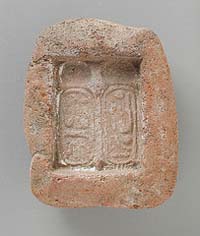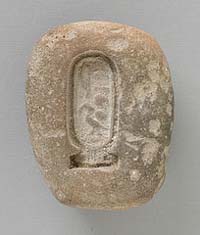Cartouche Hieroglyphics
In the ancient world of Egypt, cartouche hieroglyphics were used to form an oval plaque representing the birth name of pharaohs, queens and other persons of high standing. A line was placed at the end of the oval, indicating the royal stature of the person whose name it represented.
Egyptian pharaohs typically had five names, one which was bestowed upon them at birth and another four names that were not given until they took the throne. The final four names were bestowed upon the king to officially commemorate his transformation from a mortal to a deity.
The birth name of the pharaoh seems to have remained very prominent in the pharaoh's life. It was the birth name that was primarily used in the cartouche and the name by which the pharaoh was most commonly known.
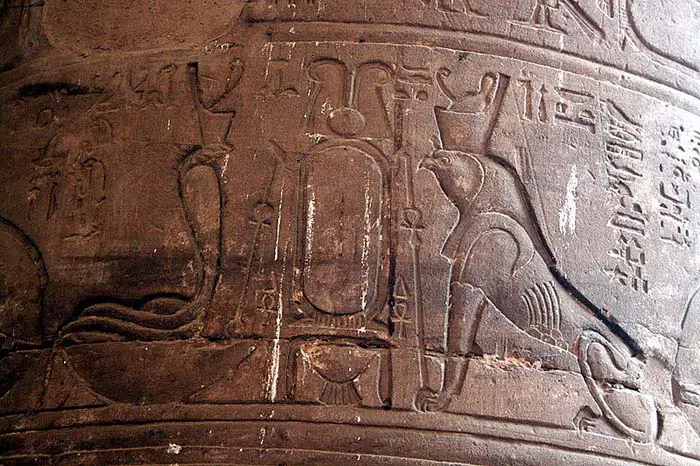
© Hedwig Storch - Cartouche at Edfu
Cartouche hieroglyphics were not introduced into Egyptian society until the Fourth Dynasty, when they were instituted by King Snefru. The Egyptians did not refer to these ancient Egyptian hieroglyphics as cartouche, this name was given to the royal nameplates by Napoleon's soldiers. Instead, the Egyptians called the oblong plaque shenu.
Prior to the introduction of the cartouche, the serekh was used to signify Egyptian royalty. The serekh was used from the earliest dates of the Egyptian kingdoms and almost always ancient Egyptian symbols referencing the god Horus, who was thought to be the protector of the king, his palace and all its inhabitants.
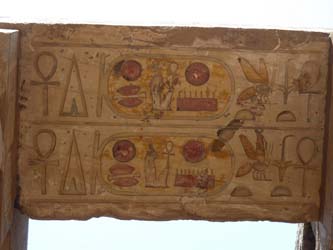
© Hannah Pethen - Throne Name of Seti I
The Importance of Hieroglyphics and Cartouche
It was believed that this type of nameplate, consisting of an oval encircling Egyptian symbols, would protect the person or site where it was placed. Archaeologists have discovered that it was quite customary to place cartouche hieroglyphics upon tombs of ancient Egyptian royalty. This custom has greatly facilitated the identification of tombs and the mummies that lie within.
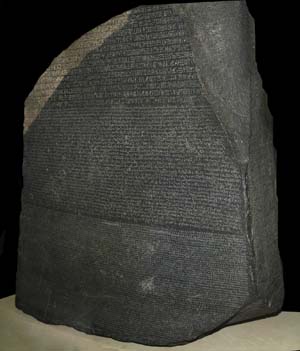
© bathyporeia - The Rosetta Stone
One of the most famous discoveries containing cartouche hieroglyphics is the Rosetta Stone, which was discovered in 1799. The Rosetta Stone is dedicated to Ptolemy V and also contains the king's cartouche. This discovery proved to be historically important because it helped to unlock the key to translating ancient Egyptian hieroglyphics.
Due to the protective qualities thought to be contained within cartouche hieroglyphics, jewelry was also often engraved with these Egyptian hieroglyphics. Jewelry with hieroglyphics and cartouche remain in demand today.


